Floating Golf Course on CNN
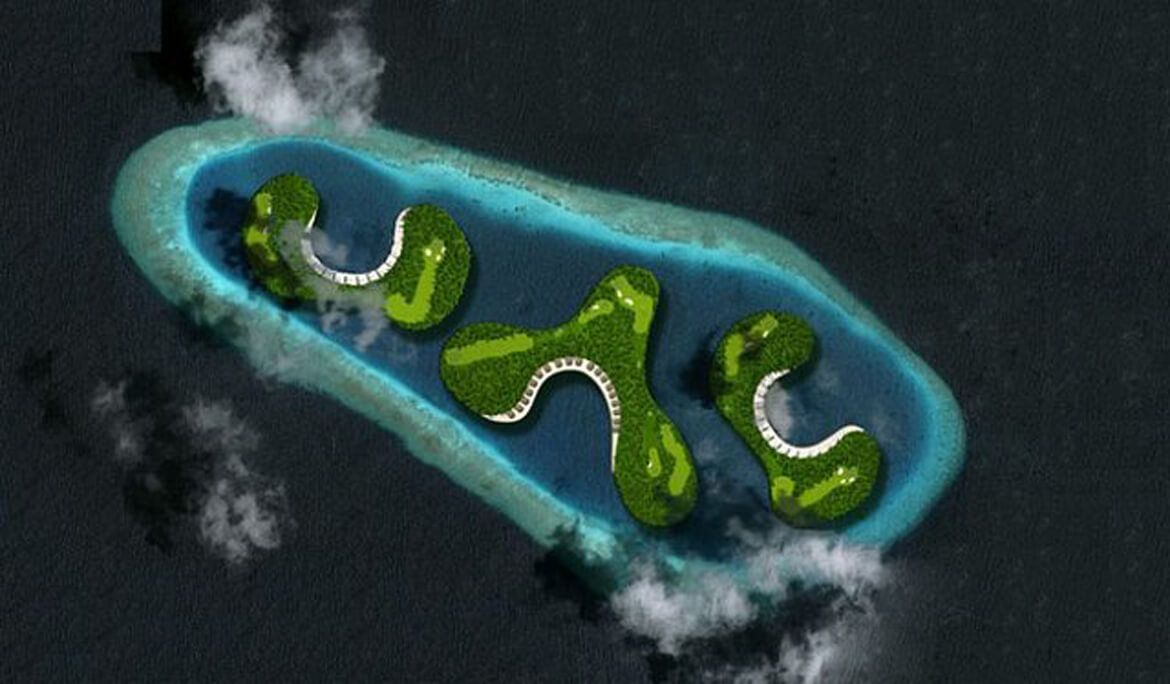
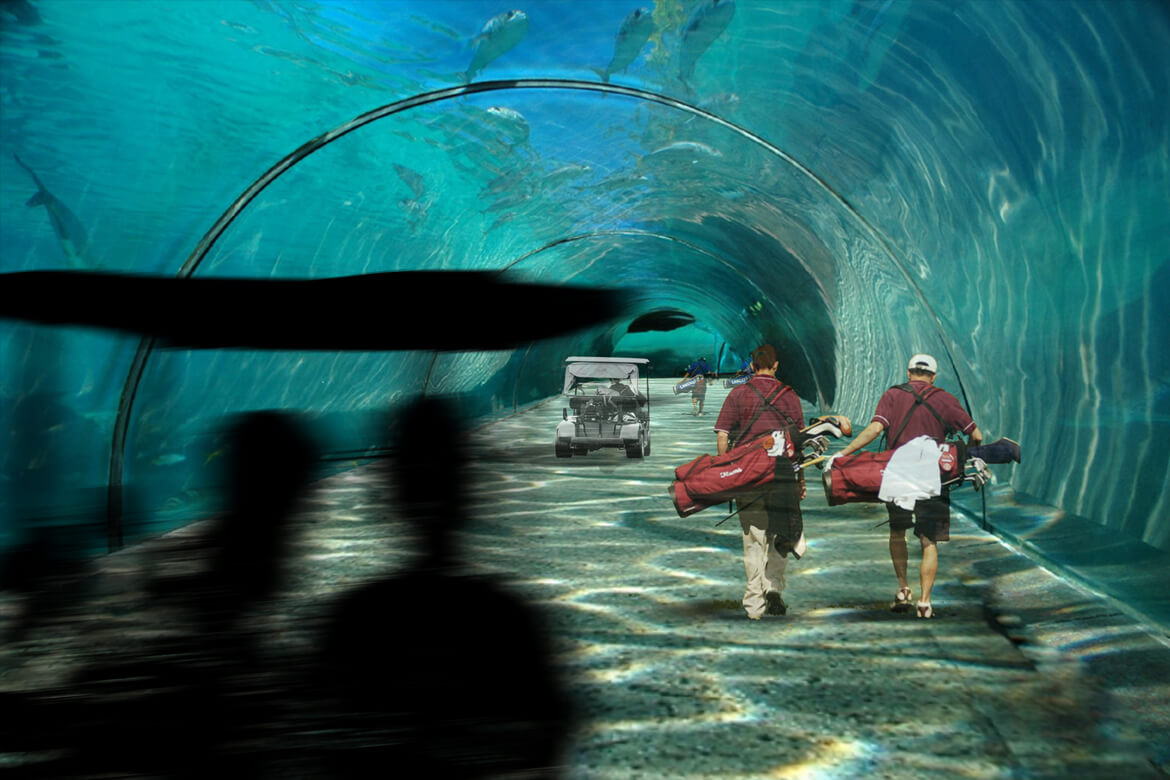
CNN, Will Tidey
Water hazard! $500 million floating golf course planned for Maldives. “Koen Olthuis’ vision will be realized when work officially starts on the project later this year”


CNN, Will Tidey
Water hazard! $500 million floating golf course planned for Maldives. “Koen Olthuis’ vision will be realized when work officially starts on the project later this year”
Amphibious Foundation A.C. Awards: Architect Koen Olthuis of the Architectural firm Waterstudio is honorable member of our Amphibious Foundation C.A.
Honorable member of our Amphibious Foundation C.A.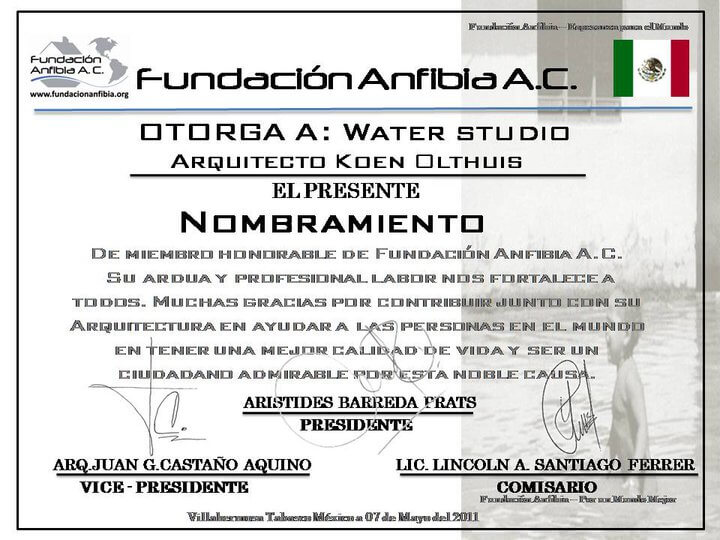
Amphibious Foundation A.C. Awards:
Architect Koen Olthuis of the Architectural firm “Waterstudio”is honorable member of our Amphibious Foundation C.A.
Your professional hard work strengthens us all.
Thank you very much for helping with your Architecture Design that helps people in the world to have a better quality of life.
You are a wonderful citizen working for this noble cause.
Fundación Anfibia A.C.
“En Dios Confiamos”
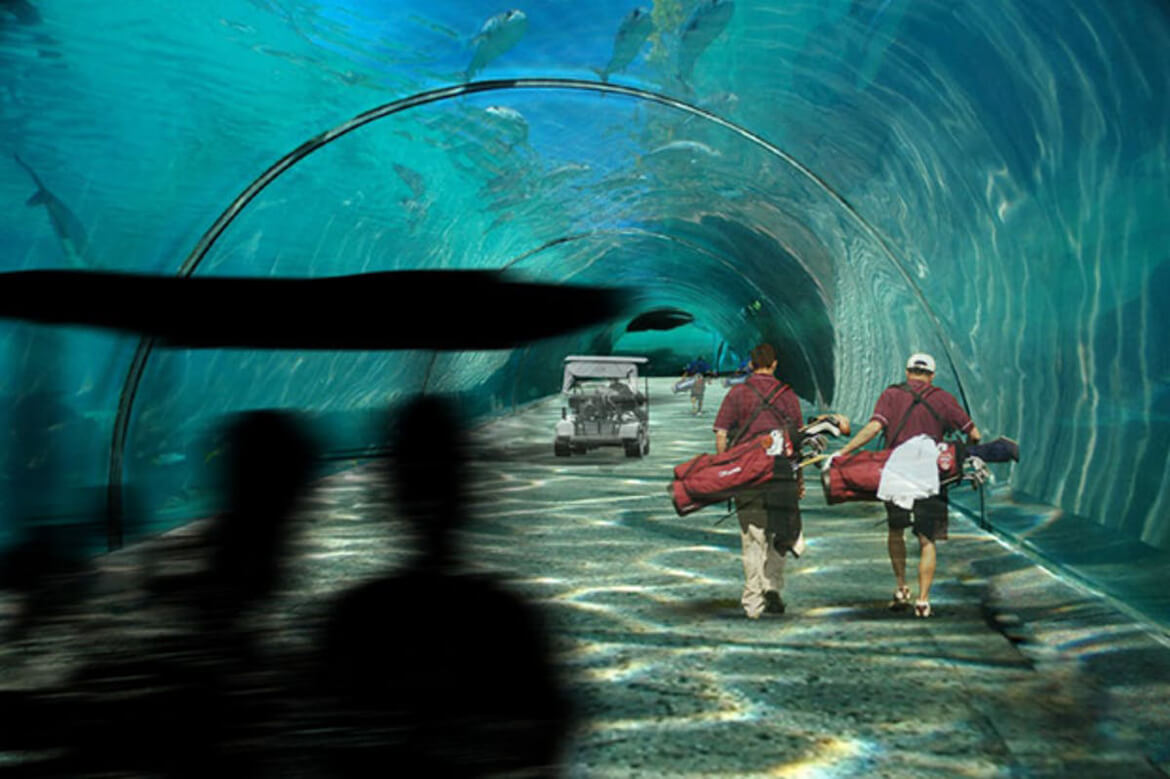
CNN, Will Tidey
You’ve just finished a round of golf on a floating course in the middle of the Indian Ocean. An underwater tunnel leads you to the clubhouse, where a glass elevator drops down to a main bar that doubles as a spectacular natural aquarium.
It might sound far-fetched, but a $500 million development in the Maldives is set to make the world’s biggest water hazard a reality — and at the same time offer a potential long-term solution to the threat of climate change in the area.
Designed by floating architecture specialists Dutch Docklands, the proposed site is just a five-minute speedboat ride from Maldives capital Male, and will offer 27 holes of golf, set upon three interlinked islands.
The government-approved development will also boast around 200 villas, 45 private islands and a conservation center — and all at little or no cost to the wildlife-rich coral reefs it will call home, according to the people behind it.
“We told the president of the Maldives we can transform you from climate refugees to climate innovators,” said Paul van de Camp, CEO of Dutch Docklands.
“And we have a way of building and sustaining this project that is environmentally friendly too. This is going to be an exclusively green development in a marine-protected area.”
With over 80 percent of their 1,190 coral reef islands no more than a meter above sea level, the Maldivian government is at the forefront of the battle against climate change.
As sea levels reach dangerous levels, one option is to build defense walls, as they have around Male. Another is to buy land from other countries and effectively move their population to other areas. The third is to live on floating landscapes.
“Climate change is upon us and the Maldives are feeling it most. That’s why they’re leading the way in trying to find a way to combat the problem.” said Mark Spalding, senior marine scientist at the Nature Conversancy.
“But building on floating islands clearly comes with a risk of pollution. Golf courses need pesticides and you need to deal with that properly to make sure it doesn’t get into the ocean. There’s also the issue of desalinating the water to irrigate the course. That has to be done cleanly too.”
Dutch Docklands appear to have a green solution. They plan to capture pesticides in concrete troughs, and recycle them in a fresh water “sweet lakes” in the middle of the golf course afterwards. That same water will then be used to irrigate the course.
When it comes to the environmental cost of constructing the islands and developments in the first place, the solution is far more straightforward.
“We’ll be building the islands somewhere else, probably in the Middle East or in India,” said designer Koen Olthuis, the man whose vision will be realized when work officially starts on the project later this year.
“That way there’s no environmental cost to the Maldives. When it comes to the golf course, the islands will be floated into position first, and then the grass will be seeded and the trees planted afterwards.”
Troon Golf, who will be lending their expertise to the project in designing the course itself, stressed the economic benefits that could result from the construction in a release issued from their headquarters in Zurich, Switzerland.
“The scar less development, which has zero footprint on the Maldives region will include state-of-the-art golf courses that look set to bring a wealth of new tourism and investment to the country,” said managing director Bruce Glasco.
But Spalding is not getting carried away. With some of the world’s most valuable coral reef real estate at stake, he plans to watch the development closely and treat all environmental claims with caution.
“I just hope the Maldives government have been wise enough to not just fall for rhetoric,” he said.
“In an ideal world a development like this would be on land, but the world is changing. I just hope they get it right. If they do, this type of development could be a harbinger of things to come.”
If things go to plan, Van de Camp expects the golf course to be ready for play by the end of 2013, will the full development set to launch in 2015. And he’s in no doubt visiting golfers will be in for a treat.
“This will be the first and only floating golf course in the world, and it comes with spectacular ocean views on every hole,” he said.
“And then there’s the clubhouse. You get in an elevator and go underwater to get to it. It’s like being Captain Nemo down there.”
Troongolf’s press release for Dutch Docklands’ Floating Golf Course, conceptual design by Waterstudio.
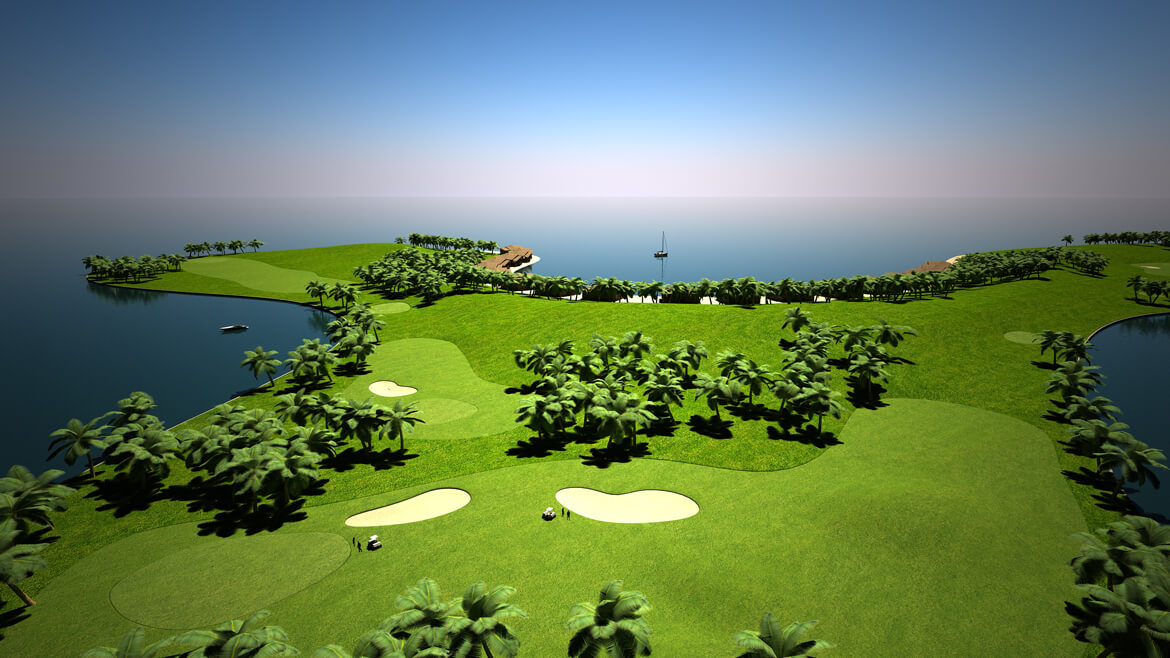
conceptual design Koen Olthuis Waterstudio.NL developer Dutch Docklands
TROON GOLF TO MANAGE WORLD’S FIRST 18 HOLE FLOATING GOLF COURSE IN GROUNDBREAKING MALDIVES DEVELOPMENT
World’s leading golf management company trusted with delivering a state of the art golf product at unique island project Geneva, Switz. – Troon Golf®, the leader in upscale golf course management, development and marketing is delighted to announce its appointment as technical advisors in one of golf’s newest and most exciting projects recently unveiled in the Maldives. Developed by the world-renowned Dutch Docklands company, industry experts in floating technology, the $500 million project is due to be completed in 2015 and will include a world class golf facility that will be interconnected by revolutionary underwater tunnels. “We are thrilled to be involved in such a truly groundbreaking project in the Maldives. Dutch Docklands are a hugely successful and innovative company and we are excited at the prospect on working closely with them on helping them realize the golf aspect of their vision,” commented Bruce Glasco, Managing Director, Troon Golf Europe, Middle East & Africa. The idyllic Maldives development incorporates a set of groundbreaking artificial floating islands that include exciting new and unique opportunities for sustainable development such as watercooling, sweet water collection floating on saltwater and use of floating solar blanket fields. The scarless development, which has zero footprint on the Maldives region will include state-of-the-art golf courses that look set to bring a wealth of new tourism and investment to the country. The floating islands will draw on Troon Golf’s industry leading expertise in delivering a world class product and its experience at some of golf’s most challenging and unique locations. The project is located just five minutes from the airport and the picturesque site will boast luxurious accommodation which will overlook the golf course and reef. With world renowned companies behind the ambitious venture, the end product looks set to boost tourism in the region attracting travelling and golfing aficionados from around the world.
Headquartered in Geneva, Switzerland, Troon Golf EMEA is committed to developing Troon Golf’s presence in Europe, Middle East and Africa. This rapidly expanding division now oversees operations at 36 courses in 13 countries including Dubai, England, Portugal, Russia and Spain with further expansion planned across all regions. Headquartered in Scottsdale, Ariz., Troon Golf is the world’s largest golf management company, overseeing operations at properties located in 31 states and 26 countries. Additionally, 39 Troon Golf facilities enjoy a Top 100 ranking by national or international publications. Troon Golf properties include Castiglion del Bosco, Tuscany, Italy; Turnberry Resort, Ayrshire, Scotland; Classic Club, Palm Desert, Calif; Brookwater Golf Club, Queensland, Australia; Saadiyat Beach Golf Club, Abu Dhabi, U.A.E; Palmilla Golf Club, Los Cabos, Mexico; and The Grove, London, England.
conceptual design Koen Olthuis Waterstudio.NL developer Dutch Docklands